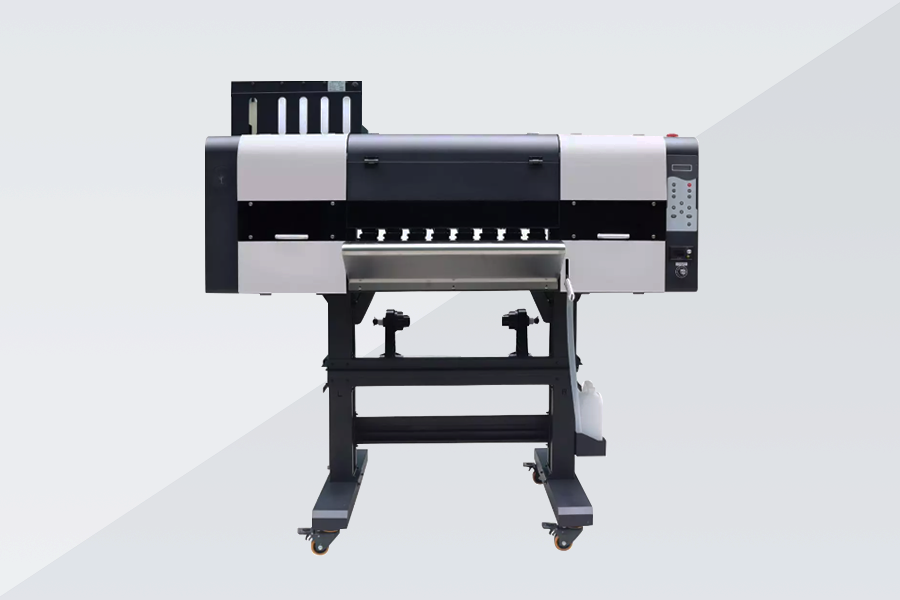DTF (Direct to Film) printing has several benefits. It is great for small business owners who want to improve their products and efficiency. Here are some tips for them to optimize DTF printing.
Choose the Right Printer
Select a cheapest dtf printer that fits your business needs in terms of size, printing speed, and quality. Consider factors such as resolution capabilities, ink compatibility, and ease of maintenance.
Quality Films and Inks
Use high-quality DTF films and UV-curable inks designed for optimal adhesion and vibrant color reproduction. Ensure compatibility between your printer and the materials you use.
Design Preparation and Optimization
Start with high-resolution designs (preferably vector-based) to ensure crisp details and vibrant colors in your prints. Use software like Adobe Illustrator or CorelDRAW for designing and optimizing graphics.
Preparation and Printing Process
Ensure that your printing substrates (e.g., textiles, plastics) are clean, flat, and free from dust or debris before printing. Proper substrate preparation contributes to better adhesion and print quality.
Heat Transfer and Finishing
Use a quality heat press machine that provides even heat distribution and sufficient pressure. Follow manufacturer recommendations for transfer temperatures and times based on the substrate material.
Quality Control and Testing
Check each print for color, sharpness, and quality. Do this before heat transfer. Conduct test prints and wash tests (if applicable) to verify durability and colorfastness.
Marketing and Customer Engagement
Highlight the versatility of DTF printing in creating personalized products. Showcase sample designs, custom options, and unique applications through your marketing channels.
Compliance and Sustainability
Make sure to follow labeling and printing regulations. These rules apply to your industry and region. Stay informed about any updates or changes in regulatory requirements.
Continuous Learning and Improvement
Stay updated on DTF printing tech, new materials, and best practices. Do this through industry publications, forums, and professional networks.
Advantages of DTF for small business owners
Here are key advantages of DTF printing:
Versatility in Printing Capabilities
DTF printing can be used on many materials beyond textiles. These include leather, wood, plastics, and more. This ability allows small businesses to offer custom products. They can do so across many industries and uses.
Small businesses can easily personalize products. They can add individual names, numbers, logos, and unique designs with DTF printing. This capability is ideal for catering to niche markets and offering differentiated products.
High-Quality Prints
DTF printing produces high-resolution prints with vibrant colors, sharp details, and smooth gradients. This makes custom designs stand out. They have professional quality, and they increase customer satisfaction and brand perception.
DTF prints are tough. They can survive many washes and environmental conditions. They won’t fade or crack. This durability is essential for products like apparel, accessories, and promotional items.
Cost-Effectiveness
Suitable for Small to Medium Production Runs
DTF printing is cost-effective for producing small to medium volumes of custom products. It eliminates the need for expensive setup costs. These are linked to methods like screen printing.
On-Demand Production
Small businesses can fill orders quickly with DTF printing. This cuts inventory costs and waste. This speed in making things is good for meeting changing demand. It also helps provide personalized customer experiences.
Ease of Operation and Setup
User-Friendly Technology
Modern DTF printing systems have user-friendly interfaces and easy controls. This makes them accessible to businesses without much printing expertise.
Minimal Setup Requirements
DTF printers typically have minimal setup requirements compared to other printing technologies. This makes production easier. It lets small businesses start printing with little investment in equipment and training.
Flexibility and Scalability
Scalability
DTF printing systems can scale with the growth of your business. Whether you’re starting small or expanding, DTF technology allows for flexible production. It can meet your evolving business needs.
Integration with Digital Workflows
DTF printers can work with digital design software and workflows. They make production smoother and cut wait times for custom orders.
Check out high quality DTF printers at dtflinko.com.
Environmental Considerations
Some DTF systems use eco-friendly, water-based inks. These inks produce fewer volatile organic compounds (VOCs) than solvent-based inks. This aligns with sustainability initiatives and consumer preferences for environmentally responsible products.
Differentiation and Branding
Unique Product Offerings
DTF printing lets small businesses stand out. They can use it for custom designs and unique products. This customization capability can help attract niche markets. It can also help build a loyal customer base.
Brand Personalization
By offering personalized products, small businesses can strengthen brand identity. They can also create memorable customer experiences. This personal touch can lead to higher customer satisfaction and repeat business.
Conclusion
Small business owners can use these tips. They can use DTF printing’s potential. It can improve product quality and add options for customization. It can also help their brand stand out in a tough market. Improving techniques and adapting to market trends will sustain growth and please customers. By using DTF technology, small businesses can improve their products. They can also simplify production and stand out in a tough market.
Stay in touch to get more updates & news on Internal Insider !










